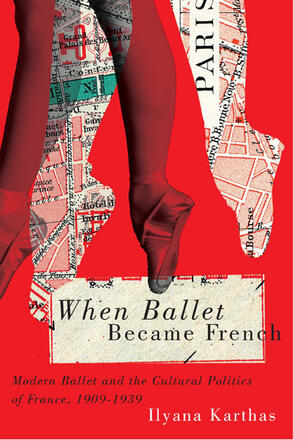
When Ballet Became French
Modern Ballet and the Cultural Politics of France, 1909-1939
Description
For centuries before the 1789 revolution, ballet was a source of great cultural pride for France, but by the twentieth century the art form had deteriorated along with France's international standing. It was not until Serge Diaghilev's Ballets Russes found success in Paris during the first decade of the new century that France embraced the opportunity to restore ballet to its former glory and transform it into a hallmark of the nation. In When Ballet Became French, Ilyana Karthas explores the revitalization of ballet and its crucial significance to French culture during a period of momentous transnational cultural exchange and shifting attitudes towards gender and the body. Uniting the disciplines of cultural history, gender and women's studies, aesthetics, and dance history, Karthas examines the ways in which discussions of ballet intersect with French concerns about the nation, modernity, and gender identities, demonstrating how ballet served as an important tool for France's project of national renewal. Relating ballet commentary to themes of transnationalism, nationalism, aesthetics, gender, and body politics, she examines the process by which critics, artists, and intellectuals turned ballet back into a symbol of French culture. The first book to study the correlation between ballet and French nationalism, When Ballet Became French demonstrates how dance can transform a nation's cultural and political history.
Reviews
"Ambitious in scope and focused in argument, When Ballet Became French offers a compelling account of the rise and fall and rise again of ballet’s fortunes as an exemplary French cultural, and implicitly, political form. Integrating dance history into a b
“L’ouvrage d’Ilyana Karthas nous rappelle, par conséquent, la complexité et la richesse de l’histoire longue du ballet, sans tomber dans le piège de l’histoire anecdotique. C’est une bonne synthèse qui s’adresse aussi bien aux lecteurs désireux d’en savoi
“Karthas makes a compelling argument that historians have missed a critical set of sources that are especially attentive to the body and gender. In this work, she seeks to repair this oversight for the interwar period in France. “Karthas' has done a treme
“Ilyana Karthas’s new study points a wide-angle lens at ballet, which reveals it as an historical practice, an ideology of the body, and a ‘cultural medium’ through which to view early twentieth-century French nationalism. A distinct advantage of Karthas’
“Karthas unearths the history and lineages of the balletic tradition and how it moved from its monarchical roots to the flowering possibilities in republicanism. On the whole, it is an interesting study and a rewarding read in an under represented area.”
“Karthas persuasively argues that ballet introduced an androgynous aesthetic that broke down traditional gender dichotomies, but alsocontributed to new and distinct modern visions of femininity and masculinity. An important contribution to French cultural history. Highly Recommended.” Choice